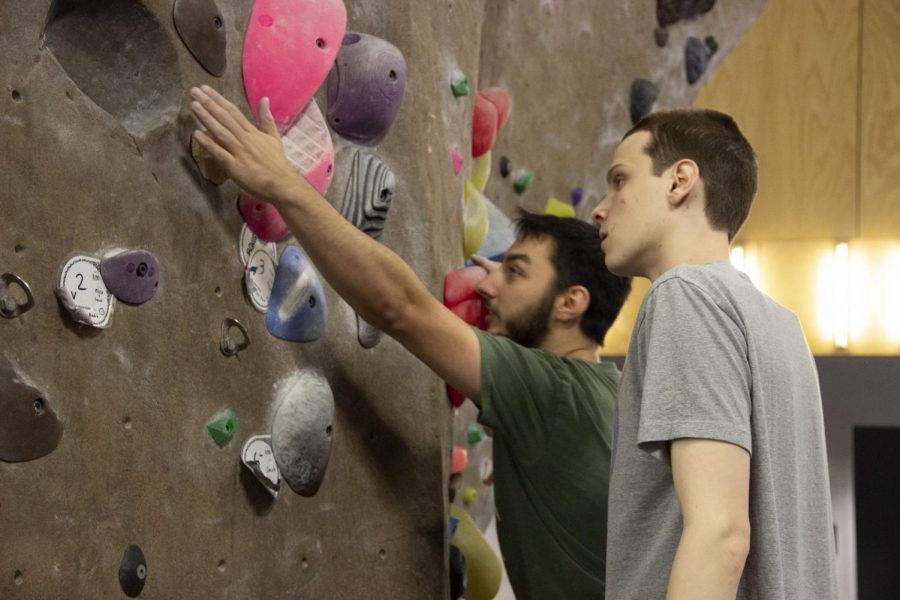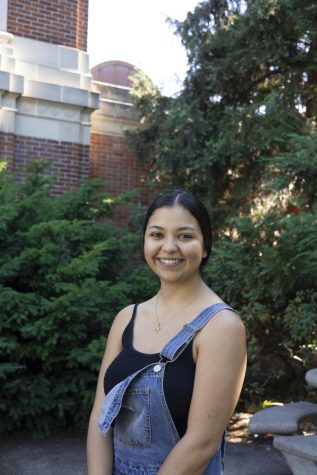Best of 2020: OSU, Corvallis gyms
January 21, 2020
First Place: Dixon Recreation Center
When you think of hitting the gym, your mind may go straight to the cardio equipment and weights. But, Dixon Recreation Center on the Oregon State University campus offers much more.
After it’s opening in 1916 as a formalized version of recreational sports, the team-based environment remains the same as the Dixon administration continues to add on new intramural sports. Along with the intramurals, Dixon has group and personal training, indoor courts and adventure-based spaces.
The gym is open 111 hours a week, and is almost exclusively run by students, whether it be at the check-in desk or teaching fitness classes.
One of the most visited spaces in the facility is the Adventure Leadership Institute rock climbing course located on the east side of the gym. This course is over 40 feet tall and includes a bouldering cave, hang boards and top-rope climbing.
“Unlike commercial gyms where they’re for profit, and they’re making sure they’re bringing more people in [to] climb, we just care what people are learning about and keeping them safe,” said Hayden Wallace, the institute’s climbing course senior associate at Dixon.
Students are able to engage with fitness activities that inspire a mindset of adventure, along with intramural courses offered through the center. Wallace has taught classes ranging from the fundamentals of rock climbing, to mountaineering and challenge course experience.
“Students can use a variety of resources, here. Whether you want to meet others who love your sport, define a regimen that works for you or just want more time outside; we’ve got communities that share those interests. Students can connect in a way that fits for them,” said Tina Clawson, the senior assistant director for advancement and assessment.
A large part of finding out what students are looking for through their gym experience lies in the feedback Dixon receives on their facility.
According to Clawson, student feedback led to the recent conversion of three low-use racquetball courts into studios for highly-requested activities: functional training, Olympic lifting and indoor cycling classes.
“We want to understand the student perspective, so we’re always listening,” Clawson said. “Whether it’s people who work here or through a survey… when people suggest some type of improvement, we listen and we try to engage with it.”
Despite the range of unique programs offered at Dixon Rec. Center, there continues to be a large amount of students who gravitate towards the traditional sports courts. By simply checking out a ball or other gear, students have access to play basketball, volleyball, badminton, or even ping pong at any of the open courts in Dixon.
“One of the main things I like [about working out here] is that there’s a lot of equipment, more than my gym back home, and there’s a lot of court space to play basketball, which is what I usually do,” said Connor Nelson, a first-year marketing major.
According to Clawson, Dixon’s success lies in the maintenance and following the values set for the gym. They vow to put students first, remain accountable for the student fees that maintain the gym, to seek solutions and constant innovation, and to educate the students that they are engaging on a day-to-day basis.
Second Place: McAlexander Fieldhouse
Sharing some of the same facilities as Dixon, McAlexander Fieldhouse has two indoor basketball and volleyball courts, and six badminton courts. There is also an indoor turf course where teams of students can play soccer.
“Our facilities are almost as diverse as students’ recreation interests. Student Legacy Park, Dixon Recreation Center, McAlexander Fieldhouse, Peavy Fields and the Challenge Course all fall under the umbrella of Recreational Sports. We want students to know that they have choices available to them,” said Tina Clawson, the senior assistant director for advancement & assessment.
The Department of Recreational Sports encompasses all of the typical aspects of a gym environment, and then goes the extra effort to give students access to a community that is actively making sure students put forth their mental and physical well-being.
Students can get involved in a plethora of ways, whether that be becoming a part of the all student-run staff at McAlexander, or helping to teach climbing classes through the Adventure Leadership Institute, or ALI, challenge course.
The challenge course is located on the bottom floor of McAlexander and is 40 feet tall, with options to climb or boulder. The climbing center has over 30 thousand visits per year and offers five thousand classes with ranging difficulty.
Other group fitness activities are offered in McAlexander, one being the Dam Fit training classes. These are high-intensity classes led by trained professionals with the first class starting on Jan. 13, from 12 p.m. to 1 p.m. Students can buy a membership to the classes for $60 a term.
Third Place: Anytime Fitness
Walk a mile off campus and you’ll find Anytime Fitness right behind Fred Meyer off of Kings Boulevard, a local gym centered around building a community for active people of all ages.
According to Jory Ness, the gym manager at the Corvallis and Philomath locations, there is no typical customer. They see OSU students regularly, but also have senior citizens who are working out consistently.
The gym itself is split into sections for cardio, functional training and a section for weights. There are also collaborative classes that aim to bring the community of the gym closer together.
After coming under new management in October of 2018, significant changes are being made in regards to programs offered.
New additions to the regimen include three sets of team training, called ‘Base,’ ‘Burn,’ and “Build,’ all targeting different types of workout for those who are just starting at the gym, looking to gain more muscle, or simply burn a high amount of calories.
There are also options for a membership that allows for trainees to pay for a set of small group classes, where you can work with a coach and up to two other members, or four one-on-one sessions for the same price.
“I think we have a really good gym culture because we have a lot of members who come in here and are pretty friendly,” Ness said. “We’ve been trying to make this a more positive and upbeat environment… and a happier place to be, to get more people in here.”
A large blackboard with the words written, “What are you thankful for?” and a list of the top 10 members of the month are also ways to increase engagement, according to Ness.
Trainers and other members of the staff encourage their members to follow their Instagram, where they post tips for maximizing workouts, highlights of other members’ fitness progress, and regular updates to the new classes being offered.

























































































































